Andesina, Amphitheater
Andesina: town of the Gallic Leuci, major sanctuary of Apollo Grannus, modern Grand.
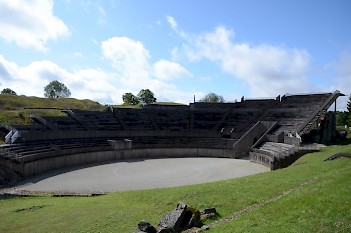
With a length of no less than 149 meters (500 Roman feet), the amphitheater of Andesina was one of the largest in the Roman world. It could accommodate about 17,000 visitors, who were seated on four superimposed tiers of seats, separated by passageways. Since Andesina was not a big city, the amphitheater was oversized and a plausible explanation is that it was used especially during religious festivals, attended by many pilgrims.
Unlike the better known amphitheaters of the Mediterranean world, which were essentially oval and were named after the fact that they were some kind of double theater, the one in Andesina was of the Gallic type: a half oval. In the Italy, it would have been called a theater.
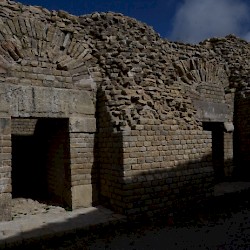 Andesina, Amphitheater, Cages |
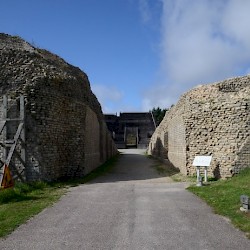 Andesina, Amphitheater, Exit |
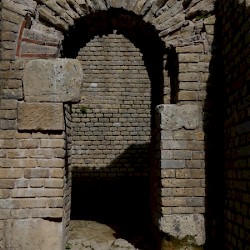 Andesina, Amphitheater, Exit |
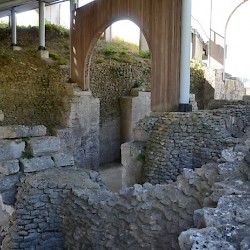 Andesina, Amphitheater, West Entrance |
Possibly, the structure was originally built as a theater, with a stage in the north. Later, the stage was removed and the arena was expanded to become the oval that typifies a real amphitheater. In any case, there are two main building phases. The original monument dates to the final quarter of the first century CE and can be recognized because small stones, concrete, and bricks were used; it was rebuilt in the early third century. In this second phase, big blocks of natural stone were used.
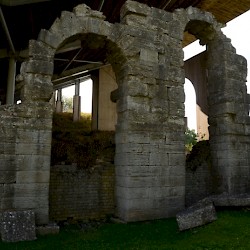 Andesina, Amphitheater, Outside, Arches |
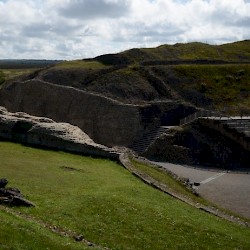 Andesina, Amphitheater, Exit |
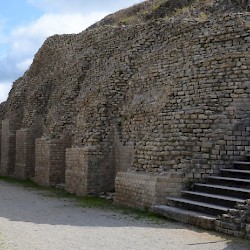 Andesina, Amphitheater, Outside, Wall |
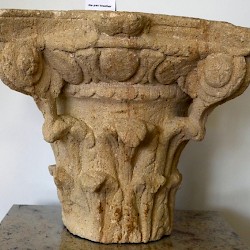 Andesina, Composite capital found near the amphitheater |
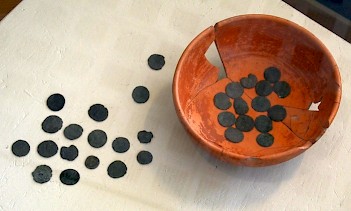
The modern visitor will recognize the arena, the seats (partly modern), a monumental exit to the east and an equally monumental entrance from Andesina's temple complex in the west. Easy to recognize are the cages for wild animals and the cells of those who were condemned to death.
Among the finds are a nice relief of Atlas, a double dedication to Diana and Nemesis, a Mill Game, and a treasure of some thirty coins from the reigns of Valentinian I, Valens, and Gratian. The youngest coin dates to the year 378 and suggests that the treasure was buried during the chaotic aftermath of the battle of Adrianople. These objects are displayed in the small local museum.
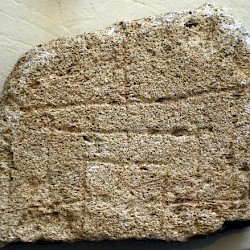 Andesina, Amphitheater, Mill Game |
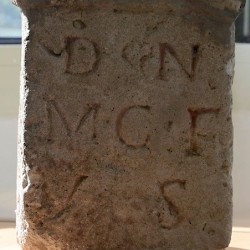 Andesina, Amphitheater, Dedication to Nemesis |
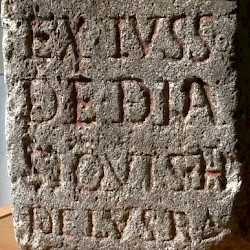 Andesina, Amphitheater, Dedication to Diana |
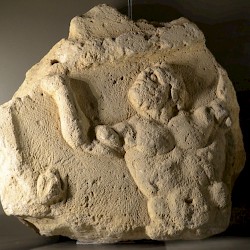 Andesina, Amphitheater, Relief of Atlas |